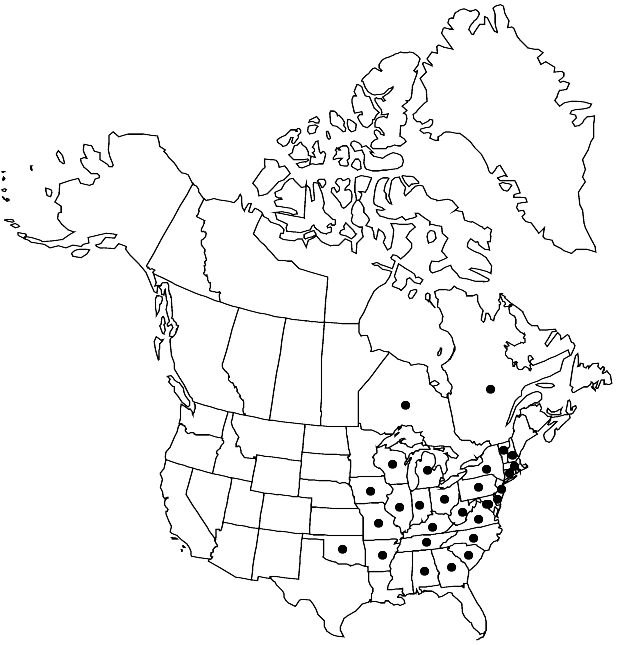Boechera laevigata
Novon 13: 386. 2003.
Biennials; short-lived; sexual; caudex not evident. Stems 1 per plant, arising from center of rosette near ground surface, (1.5–)3–11 dm, glabrous throughout. Basal leaves: blade obovate to oblanceolate, (4–)10–40 mm wide, margins serrate or dentate, ciliate-mucronate on teeth, trichomes often minute, surfaces glabrous or sparsely pubescent, trichomes simple, 0.1–0.6 mm. Cauline leaves: 7–15, often concealing stem proximally; blade auricles 3–12(–17) mm, surfaces of distalmost leaves glabrous. Racemes 16–45-flowered, sometimes branched. Fruiting pedicels suberect to divaricate-ascending, straight to slightly curved, 5–23 mm, glabrous. Flowers ascending at anthesis; sepals glabrous; petals white, 3–5 × 1–1.5 mm, glabrous; pollen ellipsoid. Fruits divaricate-ascending, not appressed to rachis, rarely somewhat secund, curved, edges parallel, (4–)6–11.7 cm × 1–2 mm; valves glabrous; ovules 50–80 per ovary; style 0.1–0.7(–1) mm. Seeds uniseriate, 1.2–2.2 × 0.8–1.4 mm; wing continuous, 0.1–0.3 mm wide distally. 2n = 14.
Phenology: Flowering Mar–May.
Habitat: Rocky bluffs, cedar glades, wooded hillsides, floodplains
Elevation: 100-500 m
Distribution

Ont., Que., Ala., Ark., Conn., Del., D.C., Ga., Ill., Ind., Iowa, Ky., Md., Mass., Mich., Mo., N.H., N.J., N.Y., N.C., Ohio, Okla., Pa., S.C., Tenn., Vt., Va., W.Va., Wis.
Discussion
The taxon sometimes treated as Arabis laevigata var. missouriensis is here recognized as a separate species (Boechera missouriensis) based on its significantly longer petals (5–10 versus 3–5 mm) and distinctive, lyrate-pinnatifid basal leaves that persist well beyond anthesis.
Selected References
None.